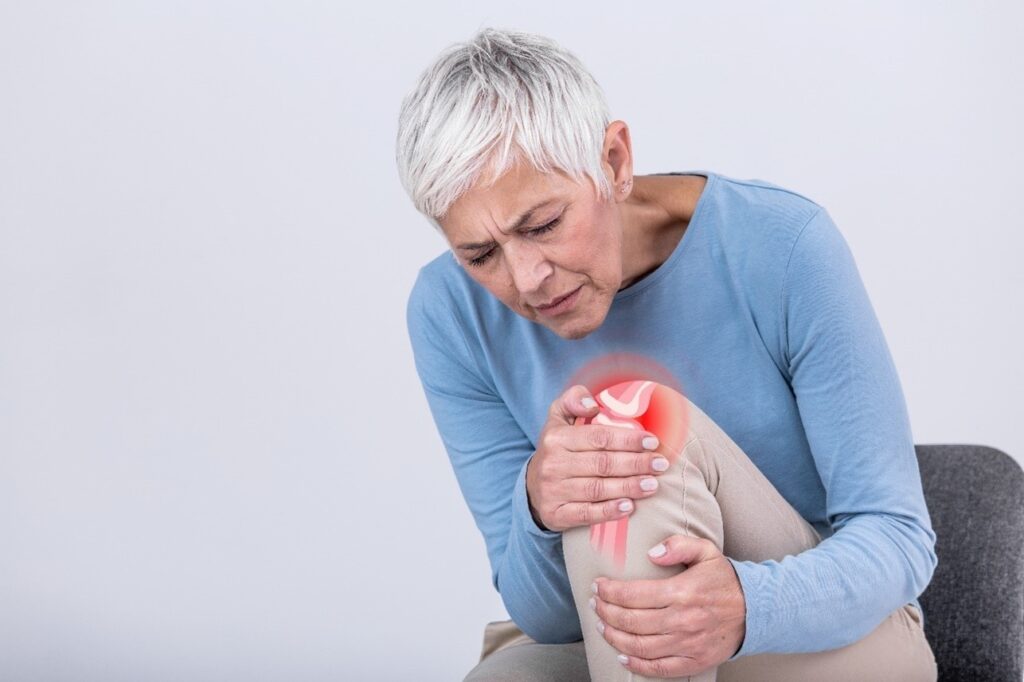Knee osteoarthritis (OA) is a prevalent condition, particularly affecting older adults. This degenerative joint disease occurs when the protective cartilage that cushions the knee joint gradually deteriorate, resulting in a range of symptoms that can affect everyday activities.
What are the Causes and Risk Factors of Knee Osteoarthritis?
Multiple factors can contribute to the development of knee osteoarthritis:
- Age: The likelihood of developing OA rises with age as a result of the natural degradation of cartilage.
- Obesity: Excess weight adds additional stress to the knees, accelerating the breakdown of cartilage.
- Joint Injuries: Past injuries to the knee or surgical interventions can heighten the likelihood of developing OA.
- Genetics: A family history of osteoarthritis can increase an individual’s risk.
- Gender: Research indicates that women are more prone to knee osteoarthritis compared to men.
- Occupation: Jobs that involve repetitive knee stress, such as kneeling or heavy lifting, can also raise the risk.
What are the Symptoms of Knee Osteoarthritis?
The symptoms of knee osteoarthritis typically develop gradually and can worsen over time. Common signs include:
- Pain: Discomfort during activities such as walking, climbing stairs, or after prolonged sitting.
- Stiffness: Particularly evident in the morning or following periods of inactivity.
- Swelling: Inflammation around the knee joint can result in visible swelling.
- Limited Mobility: Difficulty bending or straightening the knee fully.
- Grinding Sensation: A feeling of bones rubbing against each other in the joint.
How is Osteoarthritis Diagnosed?
Diagnosing knee osteoarthritis typically involves:
Physical Examination: A healthcare provider will evaluate the knee for tenderness, swelling, and mobility.
Imaging Tests: X-rays may be used to evaluate cartilage damage and any bone changes.
How is knee Osteoarthritis Treated ?
The main objectives of treatment for knee osteoarthritis are pain relief and improved mobility. A comprehensive treatment plan may include:
- Weight Management: Even slightest weight loss can significantly reduce knee pain associated with osteoarthritis.
- Exercise: Strengthening the muscles around the knee provides better support and stability, while stretching helps maintain flexibility.
- Medications: Over-the-counter pain medications can help manage discomfort. Consult your doctor before using these for extended periods.
- Injections: Injections Corticosteroid or hyaluronic acid injections can help alleviate pain by decreasing inflammation and improving lubrication within the joint.
- Alternative Therapies: Options like topical creams containing capsaicin, acupuncture, and supplements (glucosamine, chondroitin) may offer additional relief.
- Braces: Supportive devices can help alleviate pressure on the affected knee.
- Therapy: Physical and occupational therapy can provide strategies for strengthening the knee and performing daily activities with less pain.
If you or a loved one is experiencing symptoms of knee osteoarthritis, don’t hesitate to reach out for expert care. At Shri Baldev Memorial Hospital, we are dedicated to providing comprehensive treatment tailored to your needs. Contact us today to schedule an appointment and take the first step toward a more comfortable life.



